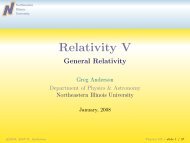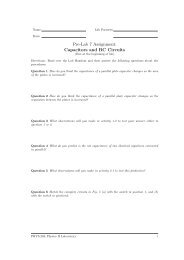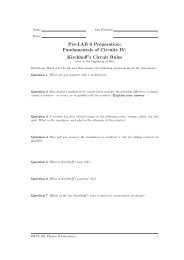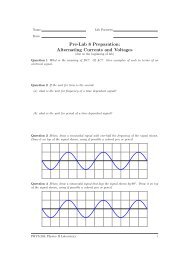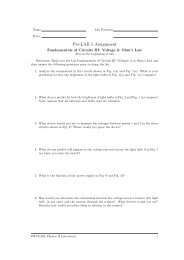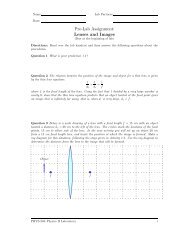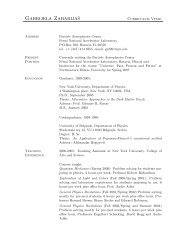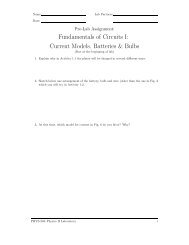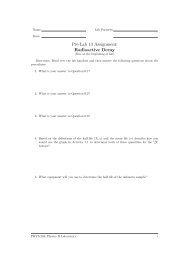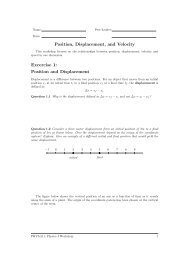Pre-LAB 4 Assignment Fundamentals of Circuits II: Currents ...
Pre-LAB 4 Assignment Fundamentals of Circuits II: Currents ...
Pre-LAB 4 Assignment Fundamentals of Circuits II: Currents ...
You also want an ePaper? Increase the reach of your titles
YUMPU automatically turns print PDFs into web optimized ePapers that Google loves.
<strong>Fundamentals</strong> <strong>of</strong> <strong>Circuits</strong> <strong>II</strong>: <strong>Currents</strong> & <strong>Circuits</strong> v 0.3<br />
initial prediction have been shown to be false. Subsequently, you should develop and adopt new<br />
concepts which are consistent with the results <strong>of</strong> your measurements.<br />
Our fist activity requires the following equipment:<br />
• Computer with Logger-Pro s<strong>of</strong>tware<br />
• Lab Pro interface<br />
• two current probes<br />
• Two 1.5 V D cell battery with holder<br />
• connecting wires<br />
• alligator clips<br />
• Two #14 bulbs in sockets<br />
• contact switch<br />
Note: the battery holder, light bulbs and contact switch are part <strong>of</strong> the Pasco circuit board.<br />
B<br />
+<br />
−<br />
A<br />
+<br />
−<br />
C<br />
(a)<br />
(b)<br />
Figure 1: Two different circuits: (a) a battery with a single bulb and (b) a battery with two<br />
bulbs. All three bulbs are identical.<br />
<strong>Pre</strong>diction 1.1 Consider the two circuits shown in Fig. 1. <strong>Pre</strong>dict the relative brightness <strong>of</strong><br />
the three bulbs shown in Figs 1(a) and 1(b) from brightest to dimmest. In making this prediction<br />
you should assuming that the batteries and bulbs have identical characteristics. (Recall that the<br />
voltage across a battery is essentially independent <strong>of</strong> the number <strong>of</strong> bulbs it is connected to.) In<br />
your prediction you should identify which bulbs, if any, are equal in brightness. Hint: Helpful<br />
symbols are > ”is greater than”, < ”is less than”, = ”is equal to,” for example B > C = A.<br />
PHYS-204:Physics <strong>II</strong> Laboratory 3




